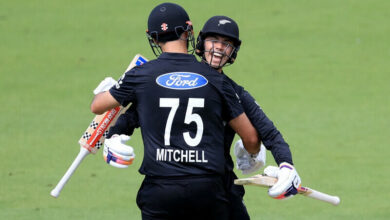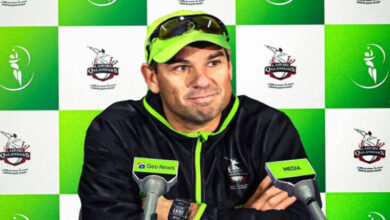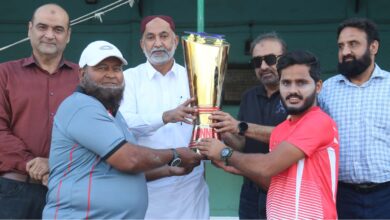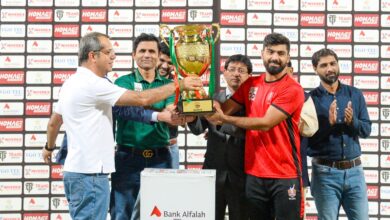Adelaide Oval curator terms Pakistan visit useful, enjoyable and collaborative


Adelaide Oval’s chief curator Damien Hough has completed his 12-day visit of Pakistan during which he visited four Test centres and worked with the ground staff, curators and coaches on pitch and outfield preparation methods.
Hough, started his visit at the headquarters of Pakistan cricket, Lahore’s Gaddafi Stadium. From Lahore, Hough travelled to Pindi Cricket Stadium, Rawalpindi before coming down to spend the last weekend in Karachi. Besides a thorough inspection of the city’s Test venue – National Stadium, Hough also made a visit to the Naya Nazimabad Ground.
Hough made a two-day visit to Multan Cricket Stadium early this week and later returned to Lahore for his final assignment. He will depart to Adelaide from Lahore tomorrow.
Besides inspecting the pitches and the outfield in the four cities, Hough also delivered lectures on pitch making and outfield inspection which were attended by local coaches, ground staff and curators.
Hough meanwhile, has termed his trip very useful and enjoyable one as besides making the pitch and ground related visits, delivering lectures and presentations, he also got an opportunity to understand and learn about pitch making in Pakistan. The visit according to him was also about exchanging ideas and collaboration.
Hough also lauded the Pakistan Cricket Board’s efforts and interest in experimenting with imported Australian soil and called it a world class approach.
Damien Hough: “There were two parts to the plan of coming over to Pakistan, like it was about providing information and understanding on how we prepare pitches at the Adelaide Oval, the grass we leave on to assist with the pace, bounce and carry which was conveyed through presentations to the coaches and participants of the lectures at the four cities we visited. We also went on the ground and rolled out a pitch to explain how we do things.
“The other part was about a visit to the different venues and to meet the grounds team and the staff and understand how they do things, the outfields, the machinery and to go home and put together a report about what I have seen. There have been a lot of positives to take away and it has been a really enjoyable tour.
“The engagement from the curators and the coaches was extremely positive. The challenges in Pakistan are different with regards to the environment and busy schedules for the curators but the good thing was that everyone was willing to learn and progress, it was about exchanging ideas and having a collaborative approach as a lot of things are done similarly both here and in Australia.
“There are a lot of things that are being done already and the curators and the ground staff are ready to learn and up skill. The commitment of the staff is exactly the same as Australia which is commendable. The machinery here is good, it is all about how to use it and about providing some advice on how it can be best used to get the results. Every year or so the equipment gets advanced. It is the same challenge for us back home as we are always trying to update and see what new machinery we need to add because it makes our job easier and of course helps improve the surface.
“The experiment with the soil is outstanding, to be in a position to put it all out in the middle of your grounds is world class thinking. The work that has already been done really excites me, it shows to me that the board is constantly looking for improvement and they deserve a round of applause. Using different clay is very exciting, these are kind of things that are very important for cricket around the world. Even if it doesn’t work there will be a lot of positives to take from this, it shouldn’t be considered a failure.
“In Australia we use different clay in all cricket academies and we try and experiment all the time. It started in Brisbane where clay from all over Australia was brought and the same we have now tried in Adelaide. To provide your team an opportunity of preparing for bouncier pitches and giving them great preparation is a great approach especially when the team fronts up to the challenge of bouncer pitches in places like Australia and South Africa.
“I will be providing the PCB a feasibility report on the idea of a drop-in pitch and it would be up to them on how they want to proceed on the matter.”




